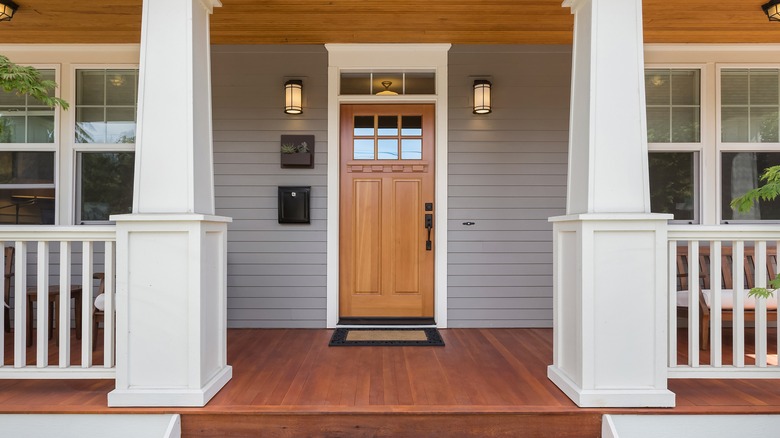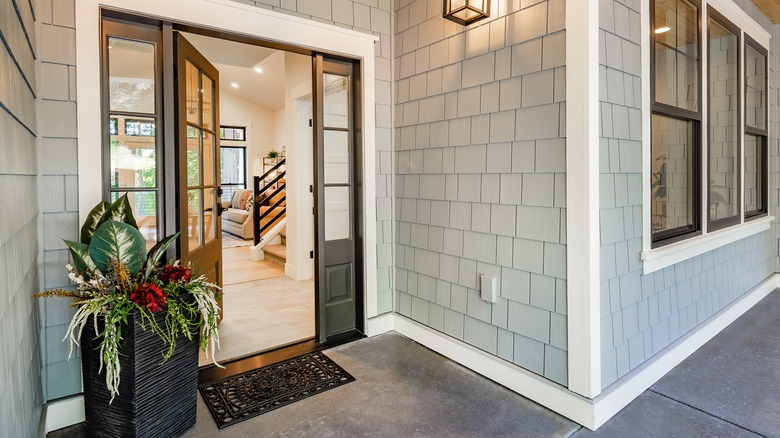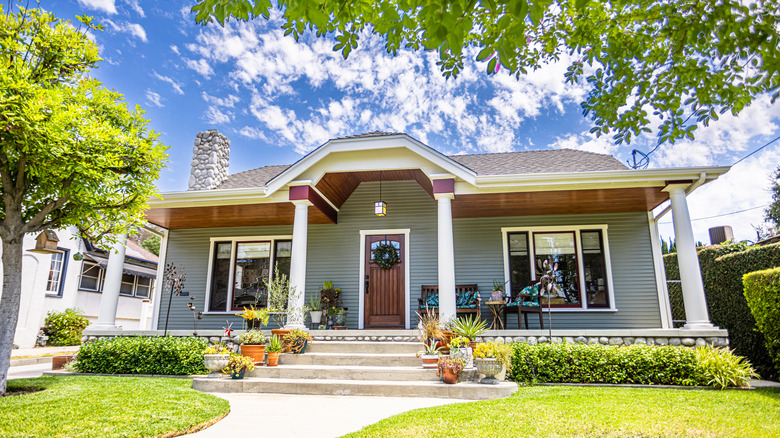Front Door Materials You Need In A Hot Climate (Hint: Don't Go For Vinyl)
In hot climates, it helps to select front door material that withstands intense heat and sun exposure while maintaining its appearance and structural integrity. Additionally, it's vital to consider factors like insulation, maintenance, and cost when choosing the ideal front door material for your home. Some materials have good insulating properties — this is crucial for maintaining a comfortable indoor temperature and minimizing energy costs, especially in hot climates. Front door materials can also vary significantly in price, and finding a balance between affordability and quality is crucial. While some materials may be more expensive up front, they may offer better durability and insulation, providing long-term value and reducing maintenance costs. The amount of maintenance required for front door material is also an important consideration, as it impacts the time, effort, and cost involved in keeping the door looking and functioning at its best. Some materials are prone to cracking and fading over time while others require less attention to maintain their appearance and structural integrity.
As we continue to explore these materials, you will better understand their benefits and limitations, allowing you to make an informed decision that meets your specific needs and preferences in a hot climate.
Popular front door materials for hot climates
Due to its longevity, energy efficiency, and low maintenance needs, fiberglass makes a great material for front doors in hot areas. Fiberglass doors are suitable for prolonged exposure to heat and sunlight because they are resistant to warping and corrosion. They also offer great insulation, which helps keep your house cool in the summer. Fiberglass doors may approximate the appearance of wood while providing superior performance in tough conditions. They are available in several shapes and treatments.
Steel doors are another option worth considering for hot climates, as they offer exceptional strength and provide excellent insulation. However, while steel has its advantages, there are specific reasons why it might not be the most suitable choice for your home in a hot climate, and you should be aware of the potential drawbacks associated with these doors. One issue is that steel doors can absorb and conduct heat, causing the surface to become extremely hot to the touch. This can be uncomfortable when opening or closing the door during hot weather. Some steel types are also prone to rust if not properly maintained, especially in coastal areas with high humidity. Regular maintenance is necessary to prevent corrosion and maintain the door's appearance and structural integrity.
Other commonly used materials
Wood doors have long been popular for their natural beauty and traditional appeal. In hot climates, choosing a wood that can withstand heat and sun exposure, such as teak or cedar (the latter being more affordable), is crucial since these woods are naturally resistant to warping and cracking. That being said, certain wood types like pine should be avoided for front doors in hot climates. When exposed to heat and sunlight, these woods are more susceptible to warping . This can negatively impact the door's appearance, functionality, and energy efficiency. Furthermore, wood doors generally require more maintenance than fiberglass or steel and may be more susceptible to damage from insects and moisture.
In hot climates, aluminum doors offer some benefits. They are resistant to rust, making them well-suited for prolonged exposure to hot, humid climates. However, there are a few aspects to consider when selecting aluminum doors for hot climates. One potential drawback is that aluminum is a good conductor of heat. This means that the door can become hot to the touch when exposed to direct sunlight for extended periods, which can be uncomfortable. Additionally, aluminum can also expand with temperature changes.
Vinyl doors are popular for their low maintenance and affordability. However, they may not be the best choice for hot climates — when exposed to high temperatures and direct sunlight, vinyl doors can be susceptible to warping and distortion.


